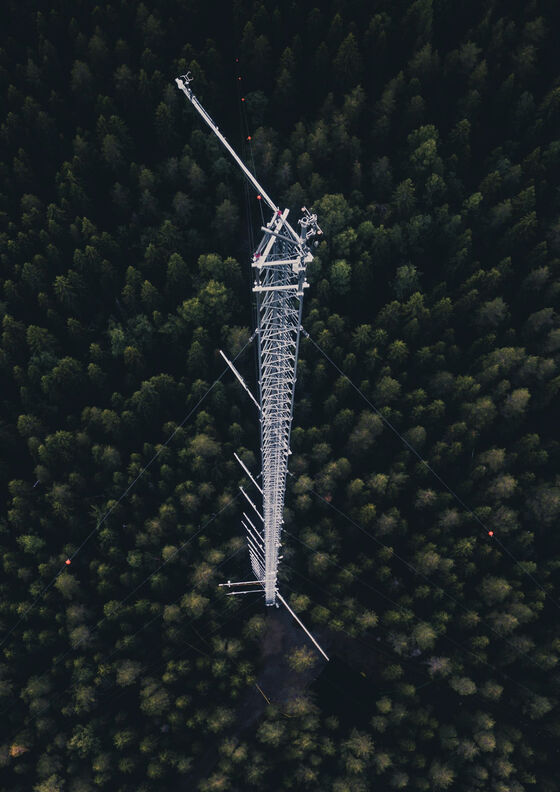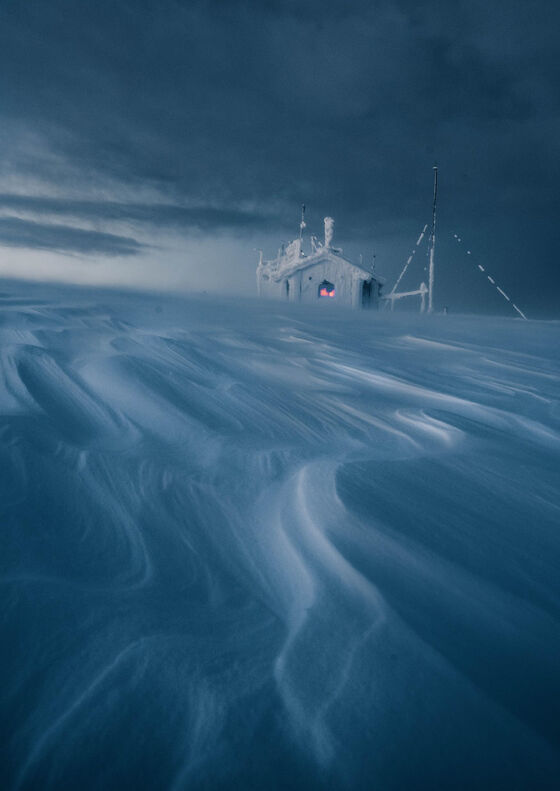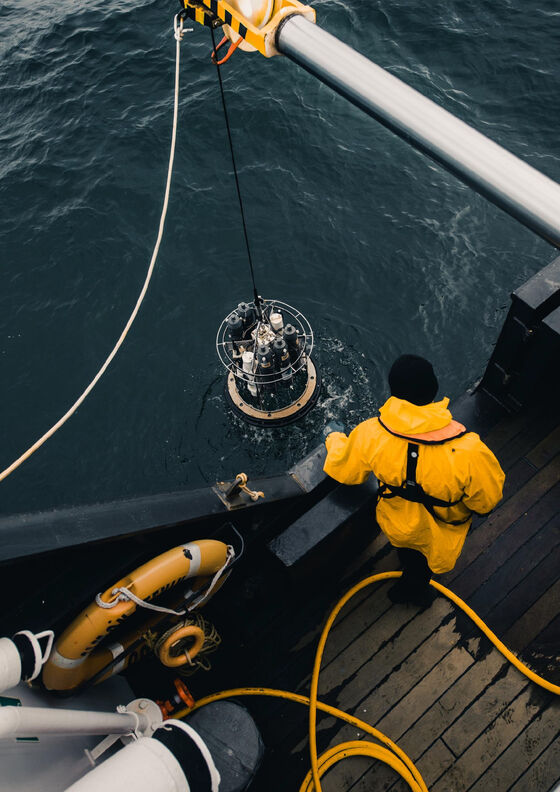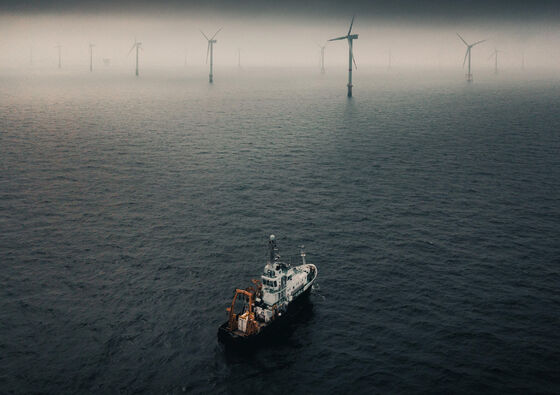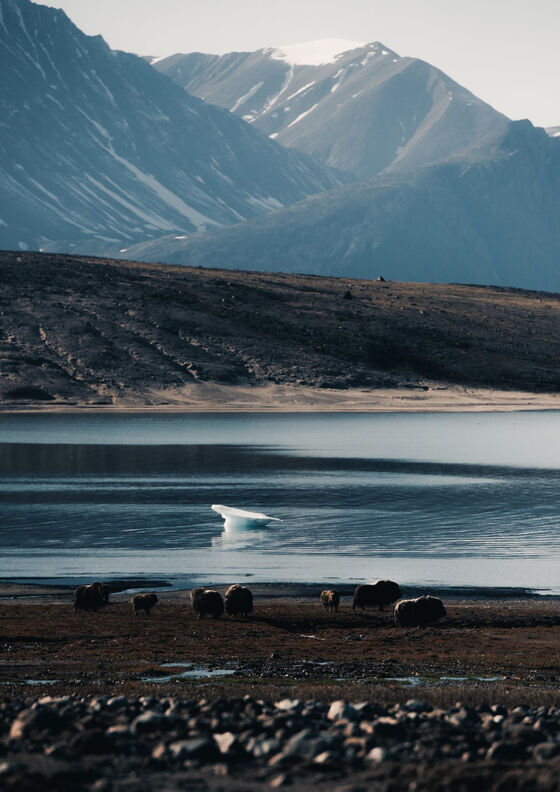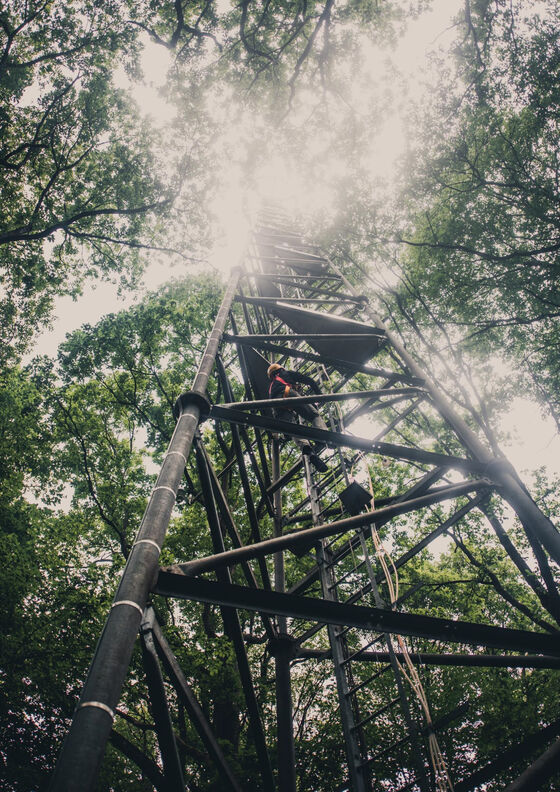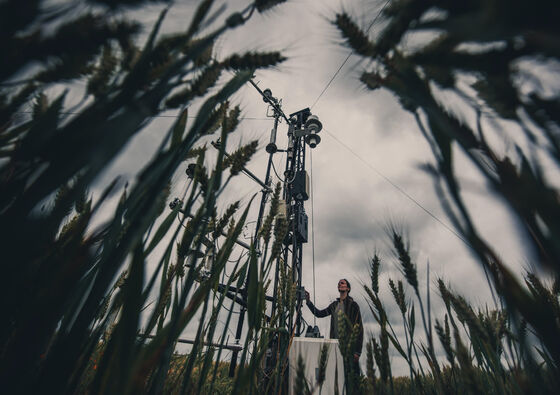ICOS (Integrated Carbon Observation System)
ICOS - Integrated Carbon Observation System is a European Research Infrastructure for quantifying and understanding of the greenhouse gas balance. The stations are located all around the world in very remote areas to stations near the cities.
The ICOS stations are coordinated and run by the ICOS National Networks in the 14 member countries. The stations in the National Networks operate in three distinct domains: Atmosphere, Ecosystem and Ocean.
Photographer Konsta Punkka spent a year documenting the life in the stations, the effects of climate change and the precious nature we must protect. See a virtual photo exhibition at #ICOScapes – Raising awareness on climate change through photographs
In the corridor at the second floor of Vattenhallen you can see some pictures from ICOS stations in Europe.
Discover ICOS data (new tab)

Svartberget, Sweden
Location: Northern Sweden
Type: Combined atmospheric and ecosystem measurements
Greenhouse gases measured by ICOS: carbon dioxide (CO2), carbon monoxide (CO), methane (CH4)
The ICOS Svartberget station is one of the few combined atmospheric-ecosystem stations within the ICOS network. This unique combination allows ICOS to observe, for example, how much carbon dioxide is taken up or released by the boreal forest and how greenhouse gases and air pollutants are acting over this boreal region.
Weather conditions and a short growing season are special for northern latitudes. Any small changes that affect the temperature or solar radiation in the area can have large impacts on the greenhouse gas balance of this forest. ICOS Svartberget station stands in the middle of a large 100-year old forest.
Boreal forests play an important role in the global greenhouse gas exchange. This type of forest currently takes up carbon dioxide from the air and stores about one third of all the carbon situated in the land. Therefore, it is important to understand what controls this accumulation of carbon and exchange of greenhouse gases in the boreal forest, and what is the forest’s potential response to climate change. For this reason, the boreal forest is especially important for international policy work on climate change mitigation.
Source: #ICOScapes - Svartberget (new tab)
Pallas Sammaltunturi
Station location: On top of an Arctic hill in Muonio, Lapland, Finland
Type: Atmospheric measurements
Greenhouse gases measured by ICOS: carbon dioxide (CO2), methane (CH4), carbon monoxide (CO), nitrous oxide (N2O)
The ICOS Pallas Sammaltunturi station is situated about 200 km north from the Arctic Circle in Lapland, where the sun does not set in summer nor rises above the horizon in winter.
The station stands on an Arctic hill covered by Alpine tundra. The tree line starts at about 300 metres down from the top of the hill. However, the rise of the annual average temperature by 2 degrees Celsius has caused the tree line to advance upward.
At the site, scientists breathe the cleanest air in Europe. The Arctic regions are especially sensitive to the air pollutants and greenhouse gases that are contributing to climate change. In Sammaltunturi, 565 metres above the sea level, ICOS is observing clean northern air coming from the Norwegian Barents Sea and the Northern Atlantic to set up a basis for measurements. Occasionally, southern winds from more densely populated European areas reach the station, allowing it to estimate the amount of air pollutants and greenhouse gases being transported to the Arctic area.
ICOS Pallas Sammaltunturi station is part of the ICOS Atmosphere Network measuring the atmospheric greenhouse gas concentrations in Europe. In Sammaltunturi, ICOS measures cover most important greenhouse gases including carbon dioxide (CO2), methane (CH4), carbon monoxide (CO) and nitrous oxide (N2O), which are contributing to the increase in the global temperature of the Earth.
Source: https://www.icos-cp.eu/news-and-events/icoscapes/pallas (new tab)
Simon Stevin och Vliz Thornton Bjo
Location: Belgian part of the North Sea
Type: Ocean measurements
Greenhouse gases measured by ICOS: Partial pressure of carbon dioxide (pCO2), dissolved inorganic carbon (DIC), potential Hydrogen (pH), dissolved oxygen (DO), alkalinity, salinity
The 36-metre long ICOS Simon Stevin research vessel and the VLIZ Thornton buoy measure greenhouse gases in the ocean. The vessel operates from the harbour of Ostend in Belgium and sails in the North Sea and in the Eastern part of the English Channel. The VLIZ Thornton Buoy is deployed at the Thorntonbank Wind Farm.
Every month the vessel stops at the buoy to collect water samples, in order to get information about the greenhouse gases and the biogeochemical composition of the ocean, as well as to ensure the accuracy of the measurements from both the buoy and the vessel.
The Belgian coast and the southern part of the North Sea is a very dynamic tidal marine environment. The area is close to highly urbanised land areas and receives significant water loads from a local estuary of the Scheldt river.
ICOS measurements help us understand the role of the oceans in climate change. The oceans are generally acting as a sink for carbon dioxide, absorbing approximately 25 percent of the carbon dioxide atmospheric emissions originated by human activities. This amount affects marine carbon cycling and consequently marine life. The increase of carbon dioxide decreases the potential of Hydrogen (pH) in the ocean, which will lead to ocean acidification.
ICOS Simon Stevin research vessel and the VLIZ Thornton buoy are part of the ICOS Ocean Network measuring the greenhouse gas fluxes over the marine ecosystems.
Source: https://www.icos-cp.eu/icoscapes-simon-stevin (new tab)
Zackenberg Fen
Location: Northeast Greenland National Park, Greenland
Type: Ecosystem measurements
Site type: High Arctic wetland (fen)
Fluxes measured by ICOS: carbon dioxide (CO2)
The ICOS Zackenberg Fen station is located in the world's largest national park, which covers an area of 972 000 km2. The station is very far away from everything else – the nearest settlement is almost 500 km away.
Here remoteness, harsh climate and frequent visits from Arctic foxes, musk oxen and polar bears bring their own challenges to the greenhouse gas measurements.
The station’s location in the High Arctic makes it suitable for observing the release of greenhouse gases from permanently frozen soil, permafrost. ICOS measurements at Zackenberg Fen improve our understanding of climate change related challenges in tundra environments where permafrost is found.
Permafrost is an important carbon storage, as approximately 50 percent of the world’s soil organic carbon pool is located in the permafrost regions. However, the permafrost may become a source of greenhouse gases in the future due to the changing climate and warming temperatures.
ICOS Zackenberg Fen is part of ICOS Ecosystem Network, which is working towards understanding the processes behind the exchange of energy and greenhouse gases between the ecosystems and the atmosphere. In Zackenberg Fen, ICOS measures carbon dioxide (CO2) fluxes, which is the primary greenhouse gas contributing to the increase in the global temperature of the Earth.
Source: https://www.icos-cp.eu/news-and-events/icoscapes/zackenberg-fen (new tab)
Lanžhot
Location: Southeast Czech Republic
Type: Ecosystem measurements
Greenhouse gases measured by ICOS: carbon dioxide (CO2), nitrious oxide (N2O), methane (CH4)
ICOS Lanžhot station is located in a lowland floodplain forest, a forest that is in kind of a transition between dry and wet environment. Water flow in floodplain forests are often managed by people, which can change the behavior of the whole forest. Generally, changes in the water flow and alterations to the high and low flows, as well as building dams and extracting water from rivers have resulted in serious worsening of floodplain forests and their greenhouse gas balance across the world.
Artificial lakes built around Lanžhot have changed the water flow in the area over the years. In addition, air temperature at Lanžhot has increased and draughts occur more often due to climate change. Warming climate can also affect the balance of greenhouse gases in the floodplain forest. ICOS observations at Lanžhot bring needed knowledge on how the floodplain forest behaves in an altered environment and in the course of ongoing climate change.
ICOS Lanžhot station is part of the ICOS Ecosystem Network, which is working towards understanding the processes behind the exchange of energy and greenhouse gases between the ecosystems and the atmosphere. In Lanžhot, ICOS measures cover most important greenhouse gases, carbon dioxide (CO2), nitrious oxide (N2O) and methane (CH4) which are the main greenhouse gases contributing to the enhanced greenhouse effect.
Source: https://www.icos-cp.eu/news-and-events/icoscapes/lanzhot (new tab)
Fendt
Location: Bavaria, southern Germany
Type: Ecosystem measurements
Greenhouse gases measured by ICOS: carbon dioxide (CO2), methane (CH4), nitrous oxide (N2O)
The ICOS Fendt measurement station is situated in the middle of a large pasture area in the foothills of the Bavarian Alps. The location represents the most typical farmland for the northern slopes of the Alps in Germany, Austria and Switzerland.
Mountain regions are especially vulnerable to climate change. Over the last 50 years, the temperature in the station area has already risen twice as much as in the rest of Germany.
Farming in this type of agricultural area is affected by climate change quite directly. Due to rising temperatures, the soil quickly loses carbon in the form of greenhouse gases that it has previously absorbed from the air over hundreds of years. In the long run, this will make the soil less fertile for agriculture. Furthermore, nitrous oxide, an extremely strong greenhouse gas, will likely increase due to lack of an insulating snow cover, and thus more frequent frost events in the soil.
In addition to improving the world’s knowledge about long-term storage of greenhouse gases in the soil, ICOS also observes the effects of climate mitigation measures and agricultural policy on greenhouse gases, on the health of the ecosystems, and eventually, on the livelihood of farmers.
ICOS Fendt station is part of the ICOS Ecosystem Network, which is working towards understanding the processes behind the exchange of energy and greenhouse gases between the ecosystems and the atmosphere. In Fendt, ICOS measures cover most important greenhouse gases, carbon dioxide (CO2), methane (CH4) and nitrous oxide (N2O) which are the main greenhouse gases contributing to the enhanced greenhouse effect.
Source: https://www.icos-cp.eu/news-and-events/icoscapes/fendt (new tab)
Castelporziano 2
Location: Presidential Estate of Castelporziano, Italy
Type: Ecosystem measurements
Site type: Evergreen Holm Oak (Quercus ilex) forest, native to the Mediterranean region.
Fluxes measured by ICOS: Carbon dioxide (CO2)
The ICOS Castelporziano 2 station is located in the heart of what was once an ancient Roman Empire. In fact, one can still see parts of the Roman bricks scattered on the base of the station. Today, the area is a well-preserved nature reserve and part of the Italian Presidential Estate, as well as an important cultural heritage site in Italy.
The station is one of the southernmost ICOS stations within Europe, and is being severely threatened by climate change.
The nature reserve at Castelporziano is covered with holm oak forest, which is one of the most relevant types of ecosystems in the lower Mediterranean areas. ICOS observations at the reserve help us understand how this type of forest is behaving in response to changes caused by rising temperatures.
In addition, the station’s closeness to the centre of Rome gives a better understanding of complex interactions between the urban environment and the plants; especially the exchange of carbon dioxide which is the main pollutant warming the globe. Other gases are also measured to see how the trees affect local air quality through gas exchange with the atmosphere.
ICOS Castelporziano 2 is part of the ICOS Ecosystem Network, which is working towards understanding the processes behind the exchange of energy and greenhouse gases between the ecosystems and the atmosphere. In Castelporziano, ICOS is measuring carbon dioxide (CO2) fluxes, which is the primary greenhouse gas contributing to the increase in the global temperature of the Earth.
Source: https://www.icos-cp.eu/news-and-events/icoscapes/castelporziano (new tab)
Jungfraujoch
Location: Bernese Alps, Switzerland
Type: Atmospheric measurements
Greenhouse gases measured by ICOS: carbon dioxide (CO2), methane (CH4), carbon monoxide (CO), nitrous oxide (N2O)
The ICOS Jungfraujoch station, located at 3580 metres above the sea level, is the highest measurement station within the ICOS network.
The Alpine region is particularly affected by climate change as a warming climate lead to glacier retreat, thawing of permafrost, and related consequences like changes in the regional water cycle, rock falls and landslides. Due to its elevation and the distance to major greenhouse gas sources and sinks, ICOS Jungfraujoch station is mainly exposed to air masses representing background conditions over Central Europe. This is of key importance when quantifying emissions from more polluted environments.
Occasionally, air pollution can also be observed at Jungfraujoch when air from lower atmospheric layers reaches the station. By analysing these special events, the unique location of ICOS Jungfraujoch allows us to unravel different greenhouse gas sources and sink areas over a large part of Central Europe.
ICOS Jungfraujoch station is part of the ICOS Atmosphere Network measuring the atmospheric greenhouse gas concentrations in Europe. At Jungfraujoch, ICOS measurements cover the most important greenhouse gases including carbon dioxide (CO2), methane (CH4), nitrous oxide (N2O) and carbon monoxide (CO) , which are all known as so-called radiative forcers leading to perturbations in the Earth’s climate.
Source: https://www.icos-cp.eu/news-and-events/icoscapes/jungfraujoch (new tab)
BARBEAU (Fontainebleau-Barbeau)
Location: Paris region
Type of measurements: Ecosystem measurements in a deciduous oak forest
The Barbeau forest is an oak forest (Quercus petraea) with a lower hornbeam (Carpinus betulus). ICOS Barbeau Station is located 53 km southeast of Paris, near the Fontainebleau Forest. This is the only forest monitored in Ile-de-France. At the station, the trees are up to 30 meters high, making the Barbeau Forest one of the tallest forests monitored in Europe as part of ICOS. The station is equipped with a 35-meter-high pylon that provides direct access to the roof, which is dominated by centuries-old oaks.
Carbon dioxide and water vapor flows between forest and atmosphere are the main variables that are measured continuously but are part of a set of micrometeorological and ecosystem measurements that are made on site. All these measurements are then used to calculate forest materials (carbon and water) and energy balances, and to characterize their variation on time scales ranging from hours to decades.
Source: http://www.barbeau.universite-paris-saclay.fr/ (new tab)
ICOS: https://meta.icos-cp.eu/resources/stations/ES_FR-Fon (new tab)
GRIGNON
Location: Paris Region, France
Type of measurements: ecosystem measurements on agricultural land
Grignon ICOS station is located 40 km west of Paris, in a region largely devoted to agriculture. Depending on wind conditions, the site can capture pollutant emissions from the city of Paris. A small tourist airport is also nearby.
Due to its proximity to the Grignon-AgroParisTech farm, the Grignon ICOS station is very suitable for field experiments to study agricultural emissions of greenhouse gases and reactive gases such as ammonia (NH3) and volatile organic compounds (VOCs).
Grignon was one of the first ICOS ecosystem measuring stations where greenhouse gas measurements started in 2004. It is an important station to better understand the long-term development of carbon and nitrogen balances in such anthropogenic ecosystems, in the context of climate change.
The analysis of coal balance results since 2004 has shown that the ICOS Grignon station behaves as a significant coal source. The majority of straw and crop residues are exported from the field, which may partly explain the above results. The long-term measurements
carried out under ICOS will make it possible in the future to provide new elements to refine this analysis.
Source: https://www6.versailles-grignon.inrae.fr/ecosys_eng/Research/Research-Projects/ICOS (new tab)
ICOS: https://meta.icos-cp.eu/resources/stations/ES_FR-Gri (new tab)


